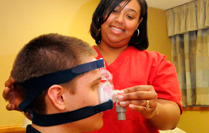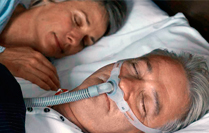Pain Relief
Electrotherapy provides pain relief without medication or surgery. What is pain? Electrotherapy Devices
TENS (Transcutaneous Electrical Nerve Stimulator) is a type of electrotherapy equipment that works by sending small electrical pulses through the skin via ten unit electrodes to the underlying peripheral nerves. TENS is thought to work in two ways. First, "high frequency" continuous, mild, electrical activity blocks the pain signal traveling to the brain. Brain cells perceive pain. If the pain signal does not get through to the brain, the pain is not "felt." The second way is by stimulating the body's own natural pain-control mechanism. "Low frequency" or short bursts of mild electrical activity cause the body to release its own pain easers called beta endorphins. YES. Although the thought of electrical impulses being sent into the body may seem frightening at first, all you really feel is a slight vibrating sensation through the tens unit electrode. Unlike many drugs, TENS devices have no known side effects and there are many tens unit electrodes to choose from for varying skin types. Individuals with a pacemaker or patients who are pregnant should not use a TENS device. Consult your doctor or clinician first to find out if this type of electrotherapy equipment is right for you. It depends on your specific pain problem. TENS devices have been successfully used to treat many pain conditions.
Is a TENS device difficult to use? No. A TENS device is about the same size as a transistor radio and is about as easy to use. Your doctor or clinician will instruct you on how to use your TENS device and how to apply the TENS unit electrodes. You may have to make minor adjustments from time to time, but this is easily done. When compared with the cost of surgery or continuing expense of drug therapy, a TENS device is a very cost-effective means of treatment. Does my insurance policy cover the cost of purchasing a TENS device? Because TENS treatment is a proven method for pain relief, most insurance carriers pay for the rental or purchase of this type of electrotherapy equipment. Depending upon your condition, TENS devices can be rented for short periods of time (post-operative pain) or purchased by patients who will use the device for the rest of their life.
What is Microcurrent? Where TENS (Transcutaneous Electrical Nerve Stimulation) is used for the relief of pain, Microcurrent, because of its close proximity to our own body's current, is thought to work on a more cellular level.
What is INF? Interferential Therapy works by sending small electrical impulses through the skin. These impulses stimulate underlying nerves and tissue reducing pain, edema and inflammation. This, in return, reduces or eliminates the need for most pain-related drugs.
What Is High Voltage? High Volt Pulsed Stimulation (HVPS) is electrical stimulation that is used for the prevention or retardation of muscle spasm; muscle reeducation; maintaining and increasing the range of motion; increasing local blood circulation and as an immediate post-surgical simulation of calf muscles to prevent venous thrombosis. The device is also used to treat wounds.
What Is An NMS Stimulator? NeuroMuscular Stimulation is a type of electro-stimulation unit known by many names in the industry such as e-stim, N.M.E.S., NMS, electrical muscle stimulator, etc. all of these words correspond to a unit providing electro stimulation used for the prevention or retardation of muscle spasm; muscle reeducation; maintaining and increasing the range of motion; increasing local blood circulation or as an immediate post-surgical stimulation of calf muscles to prevent venous thrombosis.
What Are Combination Units? As the name implies, a Combination Unit is one, which combines multiple stimulation modalities in a single device. Modalities such as TENS (Transcutaneous Electrical Nerve Stimulator), NMES (Neuro Muscular Electrical Stimulator), INF (Interferential Stimulator), and HVPS (High Volt Pulsed Stimulator), can be used individually, or set up in a sequence to provide a total treatment regimen.
|





